- 15 Comments
- Edwena Kennedy, RD
- Originally Published: February 4, 2021
Over the years, we’ve received a lot of questions from parents who are stressed out that, for whatever reason, their baby isn’t able to transition off purees. Maybe they’ve tried, and it ends up with their baby gagging excessively, vomiting, or just flat-out refusing to eat anything other than a simple smooth puree.
Don’t get me wrong, purees can be a great option when you’re starting solids with your baby, that’s why we include them on our Texture Timeline™! But they aren’t needed for long, especially once your baby has a safe swallow and can handle that texture with ease.
Many parents end up feeling stuck in this never-ending rut of offering purees, trying to branch out to other textures and whole foods, only to be shut down by their little ones. So if that sounds like you – you’re not alone! This cycle can repeat again and again before parents seek help or guidance in moving forward.
With that in mind, let’s cover how to tackle this transition and get to the bottom of why your baby may be having difficulty transitioning from purees to solids!
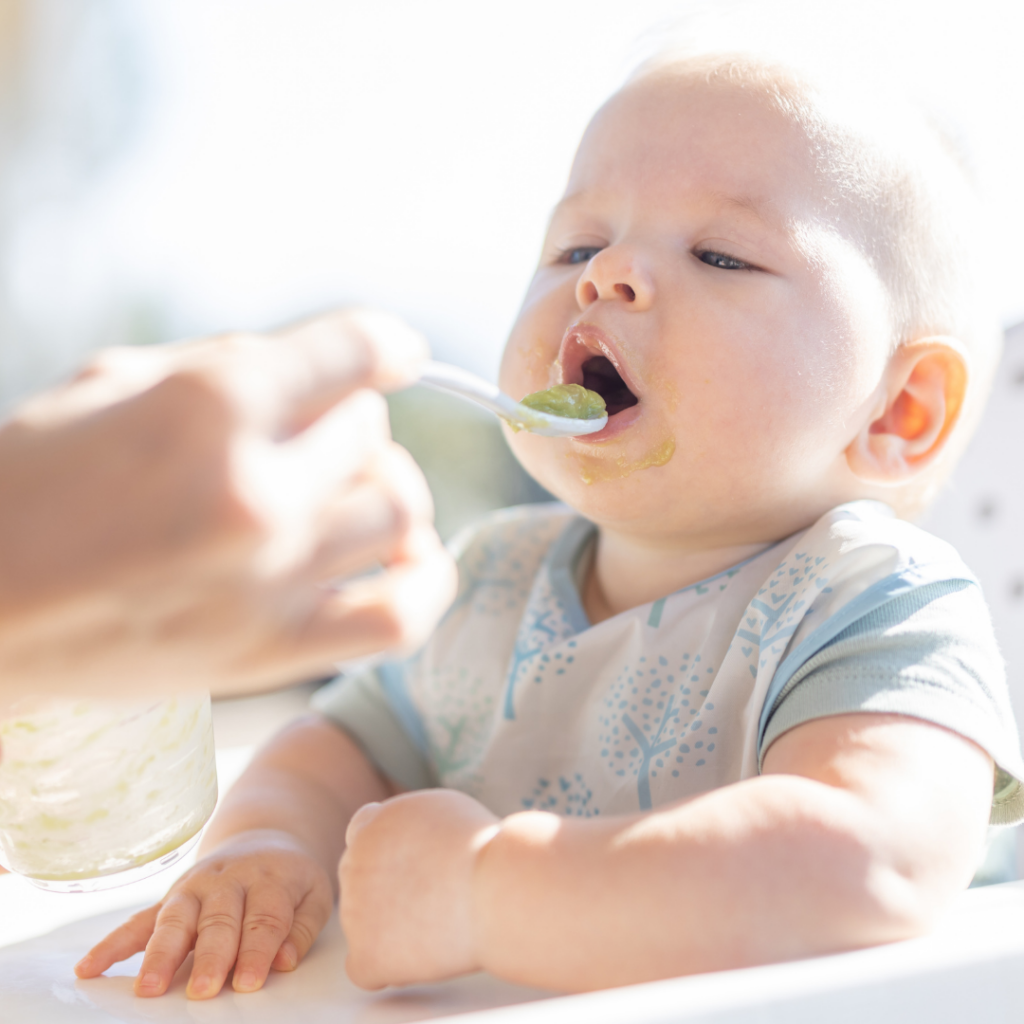
If you find yourself stuck on purees and want to move forward but still want to go at a gradual pace that feels right for both you and baby, register for our free workshop “Baby led weaning (but make it purees!)”.
We’ll teach you all about our signature Texture Timeline™ that allows you to gradually advance from a smooth puree to mashed foods to soft solid foods and more complex textures. We’ll also talk about most parents’ number one fear when starting solids – gagging and choking! Sign up to save your seat, spots are limited.
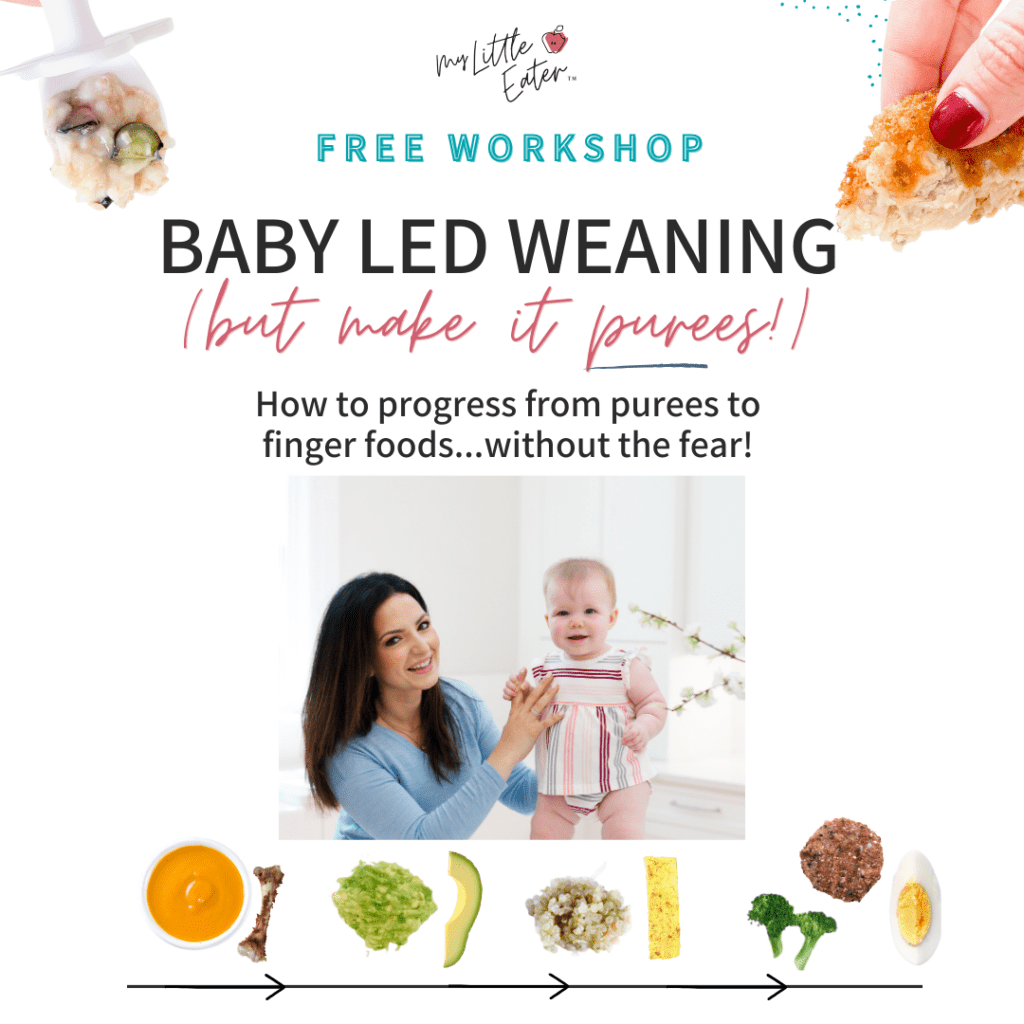
Table of Contents
If you prefer to listen to our tips, download our podcast episode below to get all the answers you need while you multi-task like a pro!
Why babies get stuck when transitioning to solid foods
Let’s take an in-depth look at the top reasons why your baby may get stuck on purees before tackling how to handle this transition.
1. Delayed introduction to finger foods
Purees have always been the “traditional” way of introducing solids. Back then babies were on purees until about 10+ months of age, and that was only puffs, soft fruit, and diced veggies! The introduction of table food, aka the same food that the whole family was eating, wouldn’t happen until 12+ months.

This makes sense because when puree feeding and commercialized baby food became popular there was a big push to keep babies on purees for as long as possible. Not only did we see that babies were encouraged to start on purees earlier than required, but they were also encouraged to stay on purees for longer than needed. Babies eating purees longer, equals more money in the pockets of those who manufacture baby food!
We now know that when table food introduction doesn’t happen until closer to the one-year mark, it can be a struggle for many babies. They often push back on the transition because they’ve been kept on purees for too long and the introduction of finger foods is happening way too late in the game.
This isn’t true for every baby – some will do just fine! But for the ones who don’t, they’ve now reached the point where they’re stuck on purees.
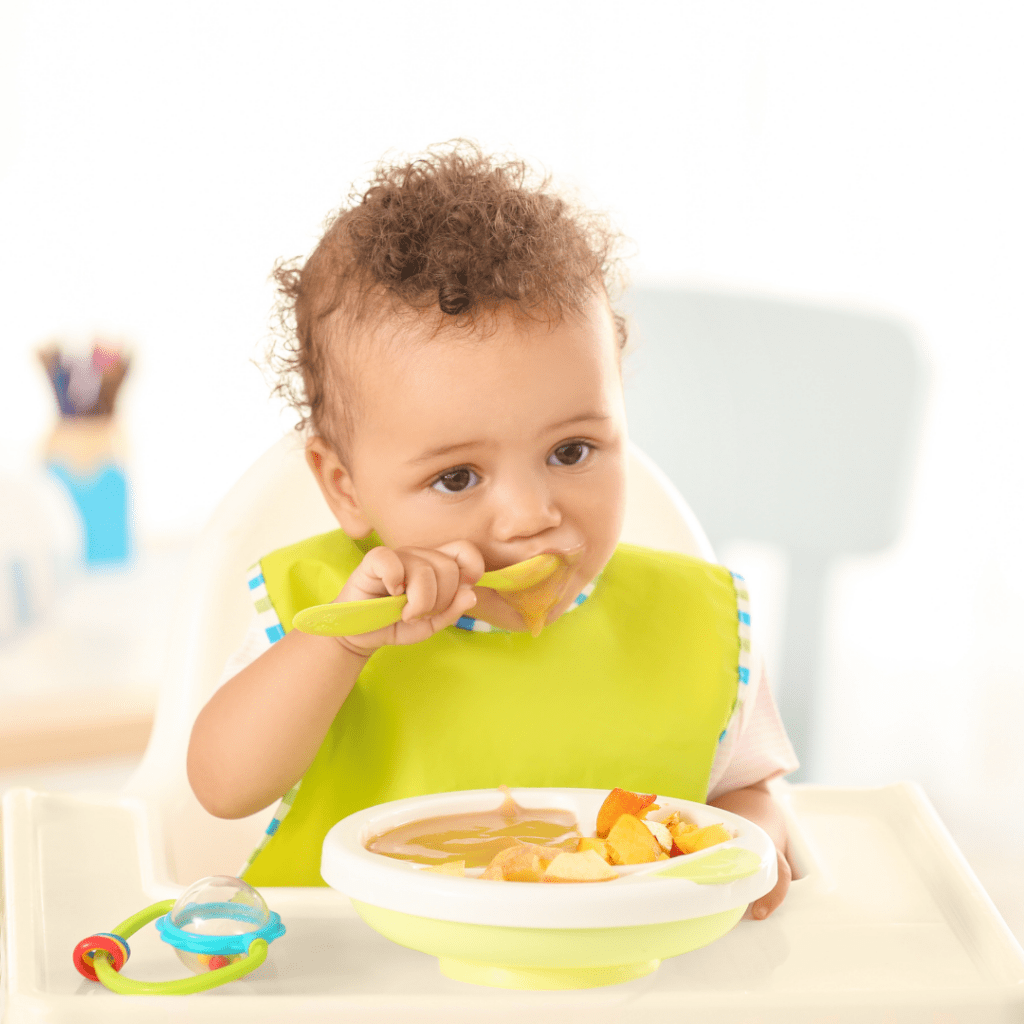
2. Infrequently serving finger foods
Even if your baby has been introduced to finger foods earlier, sometimes they get stuck on purees because they haven’t had enough experience with a variety of finger foods. It could be that finger foods are offered only once every couple of days, or just on the weekends, for example.
When they get limited experience with finger foods, or they’re not offered at every meal (or at the very least 50-60% of the time), babies may not develop the skills they need to eat them. As with any skill, practice is necessary, so ensuring they’re getting the opportunity to try eating finger foods is very important.
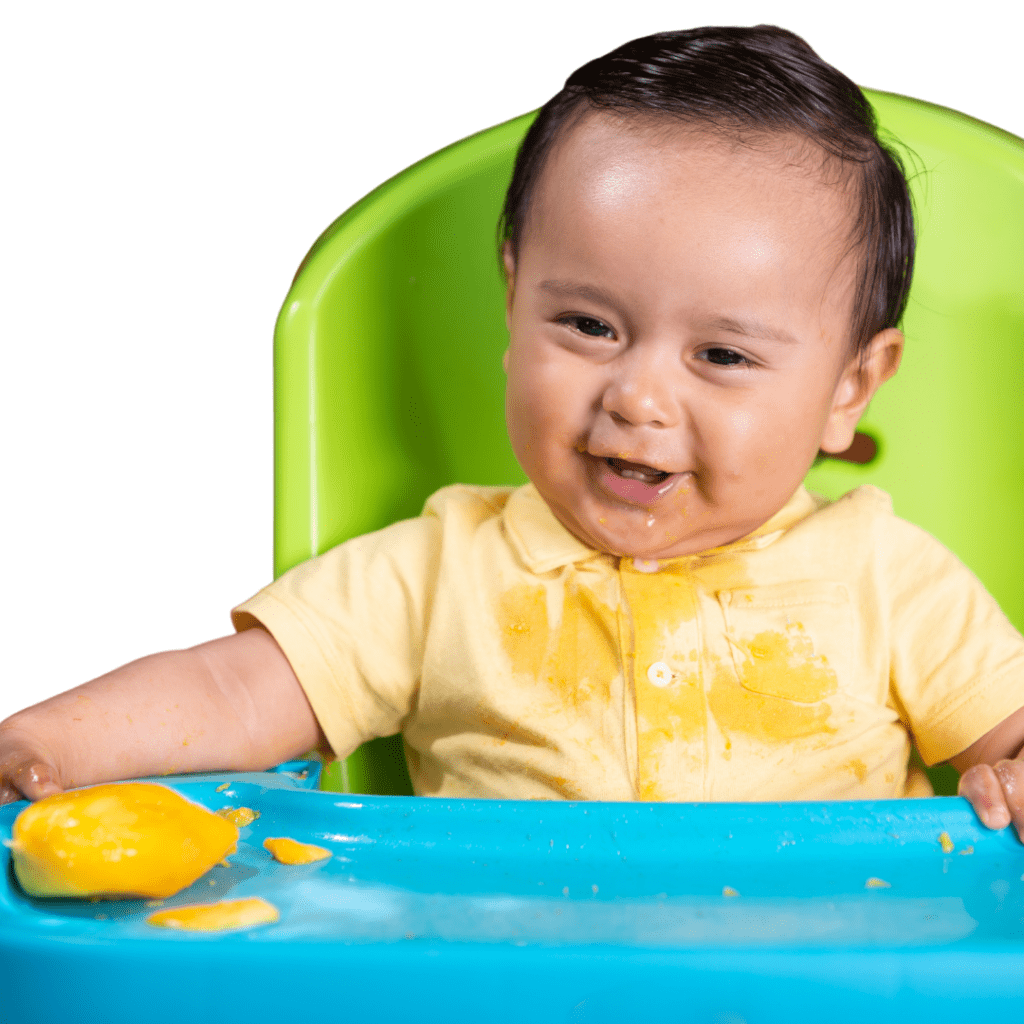
3. Always serving pureed foods as a backup plan
We often see purees offered as a quick alternative for babies who refuse to eat the solid food that is initially offered. Therefore, they develop this expectation that if they refuse to eat table foods they’ll be offered purees as a backup.
You may notice your baby spit out the finger food, or even a chunkier puree they’re not used to. They might also flat-out refuse it, ignore it, or cry and fuss at the sight of it, only stopping when the old faithful smooth puree is brought out for spoon feeding. We also hear this happen with babies who prefer puffs, rice rusks, or other soft solid foods that are easy for them to eat.
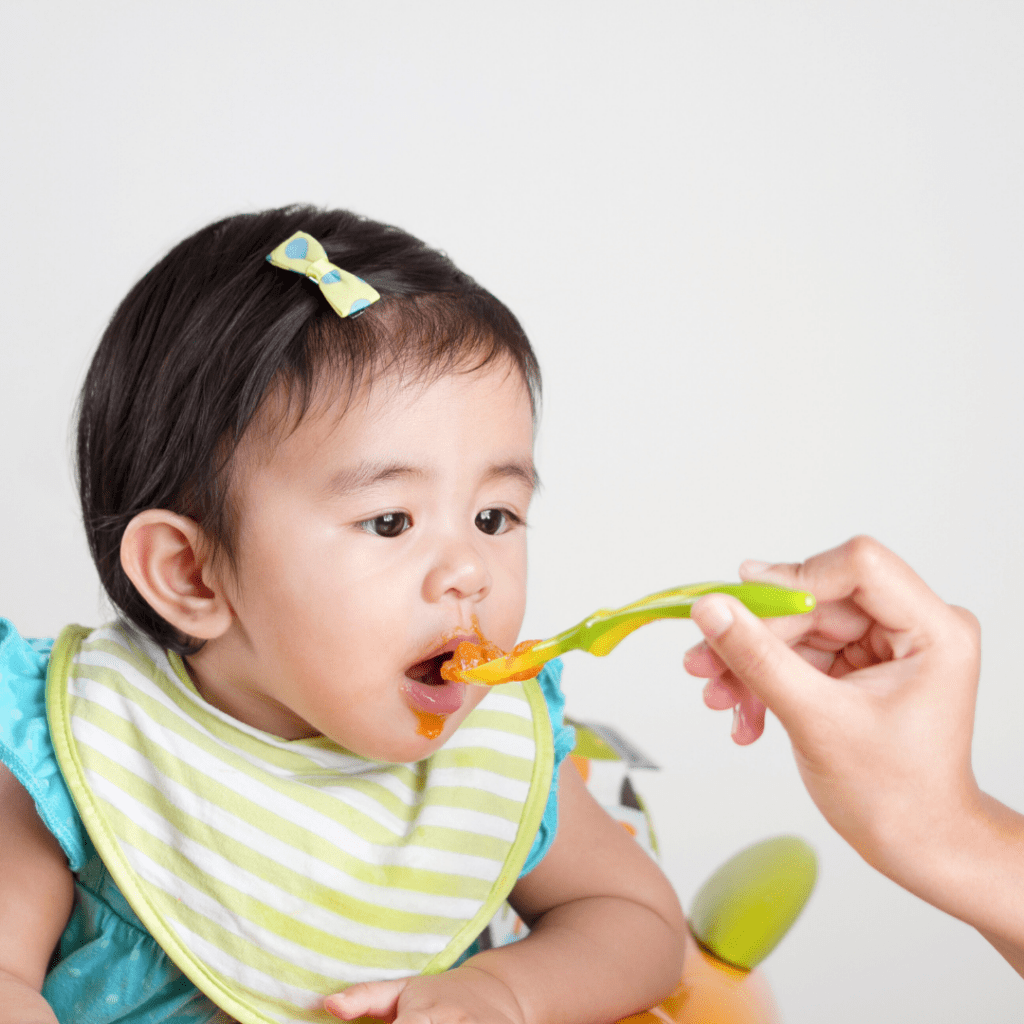
This reaction can be beyond frustrating for parents and they often worry about them eating nothing at the meal, so they resort to offering purees as a backup once any of these scenarios happen. Unfortunately, this can keep them stuck in that same cycle we mentioned earlier, with no end in sight!
4. Not serving a variety of textures in the finger foods offered
Another reason babies might have difficulty transitioning onto finger foods is because they’ve only been offered finger foods that are ultra soft or melt really easily in their mouth. Think things like avocado slices, bananas, rice rusks, or puffs.
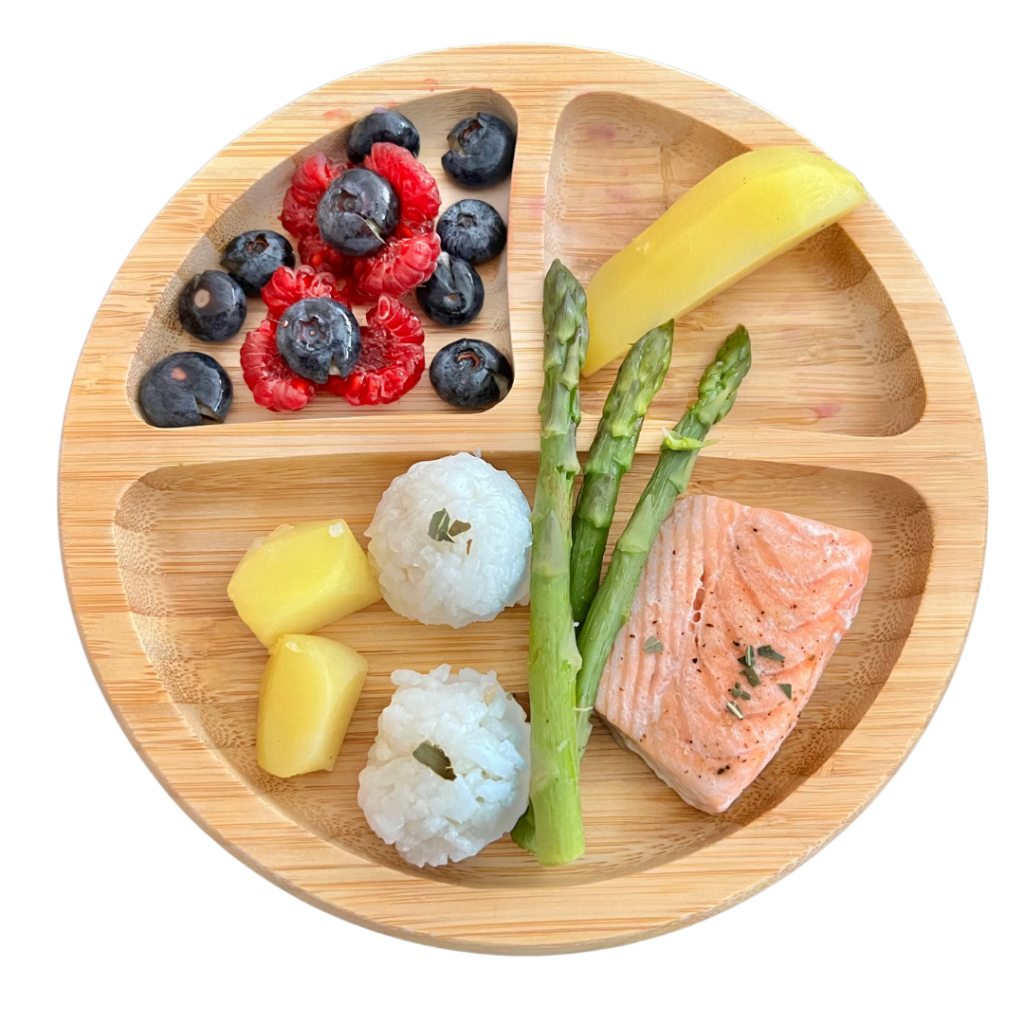
We find that parents often start their babies off on these foods, and then assume that they’ve done what is needed to “introduce finger foods early”. The thing is, our babies need the experience with a variety of textures, not just ultra-soft or meltable textures.
This is because it will allow them to continually advance by challenging them with more difficult-to-chew foods so that they continue to develop their eating skills. This practice helps make sure that they don’t give up once something doesn’t easily dissolve, or mash, in their mouth. If they’ve never been given a finger food with a more advanced texture – like shredded meat for example – they won’t know what to do with it and may refuse it in favor of the purees or finger foods they’ve had many times.
What if your baby isn't interested in finger foods until later on?
Sometimes babies don’t show interest in self-feeding until about 8 months of age. It’s not as common, but it is possible. Especially if they’re not hitting those developmental milestones at the same time as the majority of babies – which is totally fine! Every baby grows at their own individual pace.
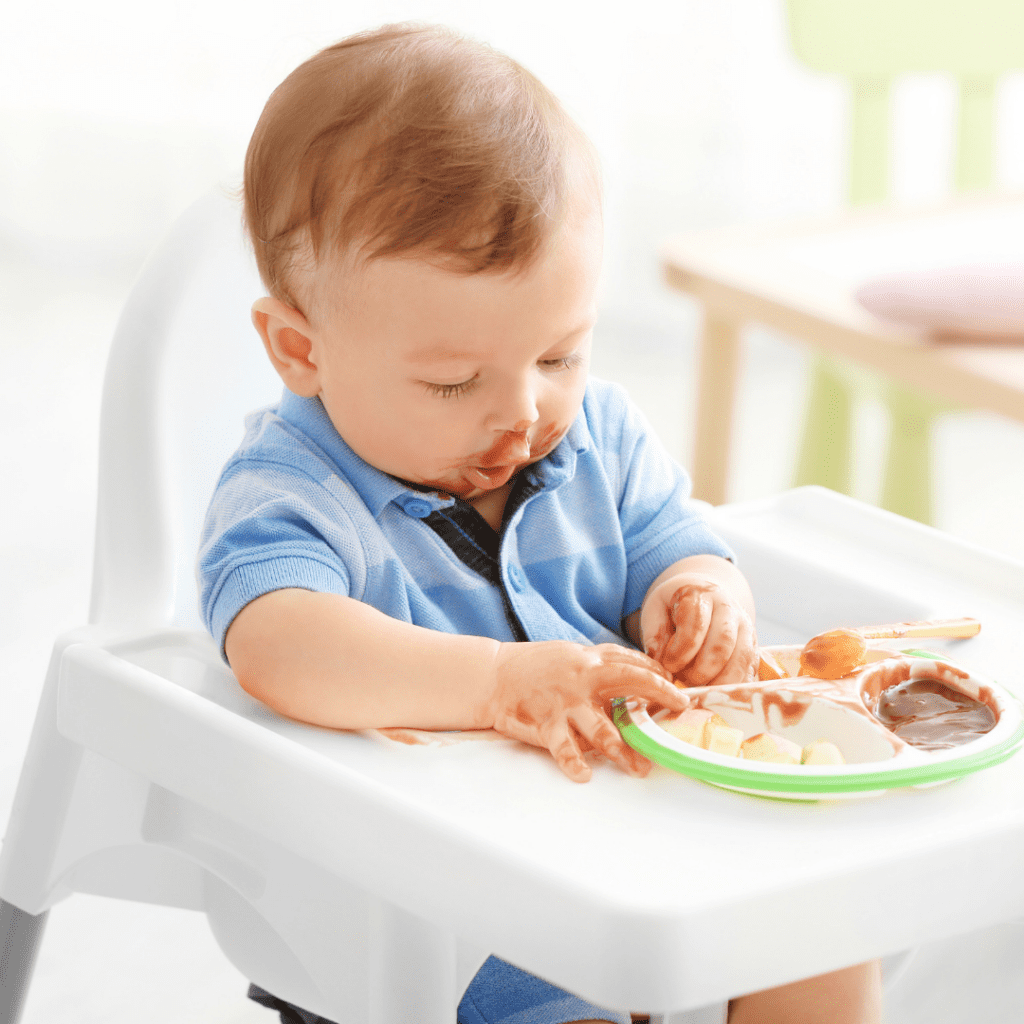
When this happens, it’s ok to wait until they’re ready and continue to feed purees to them in the meantime. As soon as you see your baby is willing and able to independently eat finger foods, you need to give them the opportunity to do so.
There’s this small window of opportunity between 6 and 9 months of age where babies need to get practice and experience eating more textured foods and finger foods. This will help them gain the independence that’s needed for self feeding. If you wait until after that window of opportunity, it becomes much harder for them to get that confidence because they’ve gotten used to purees.
When this happens, purees become much more of a habit, and they end up not having the opportunity to exercise their oral muscles, and gain those oral motor skills, like munching, chewing, and moving food around in their mouth. Updated research very clearly shows that babies who haven’t been introduced to lumpy and textured foods by 9 months of age, may have an increased risk of developing feeding problems and picky eating later on (1).
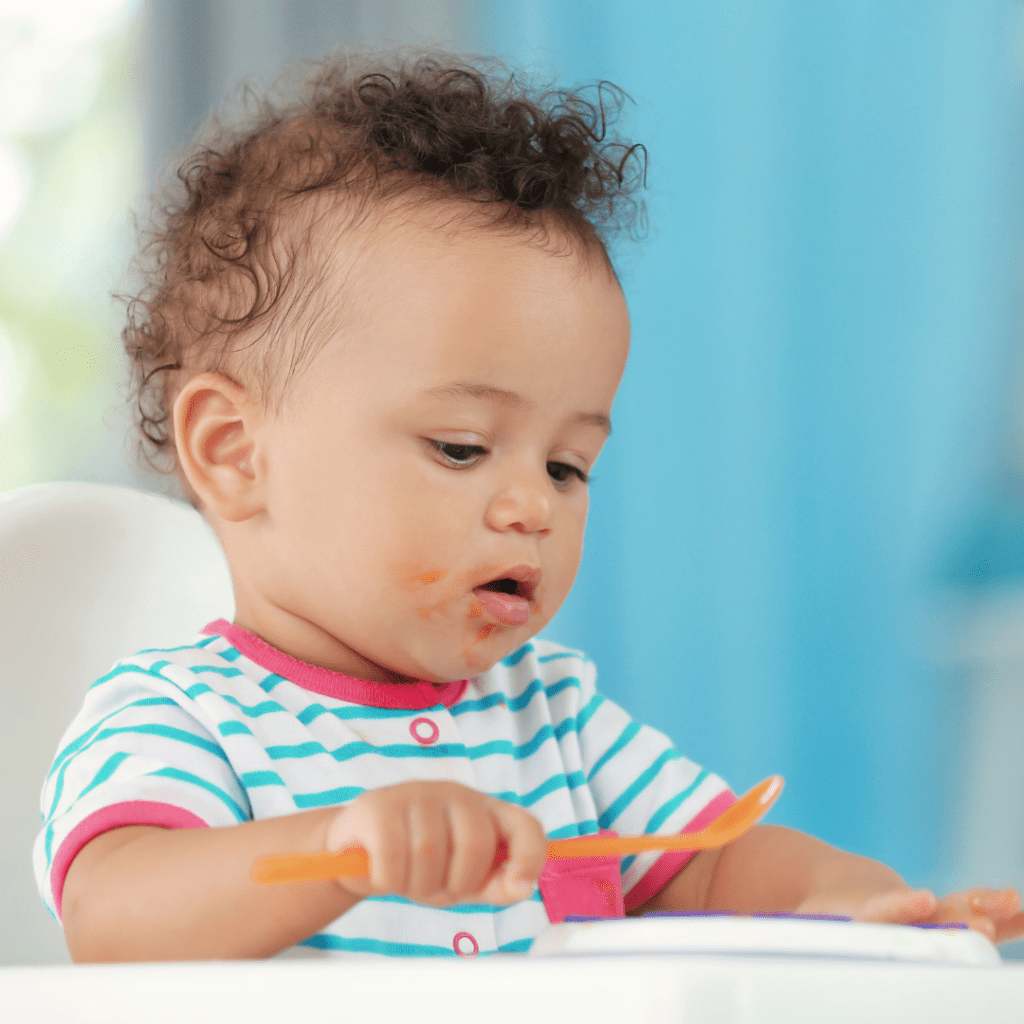
If you take away anything from this, it should be how important it is to introduce your baby to finger foods as early as they show they’re ready for it – typically within a month, or two months maximum, after starting purees. And for some, it can be as early as their first day or two of starting solids. Once they’ve mastered the skill of eating purees, move on to practicing the next!
How to transition from purees to solids
If your baby falls into one of the four categories above, or you’re just getting started and want to prevent getting stuck, try one (or all) of these four options to help your baby move forward.
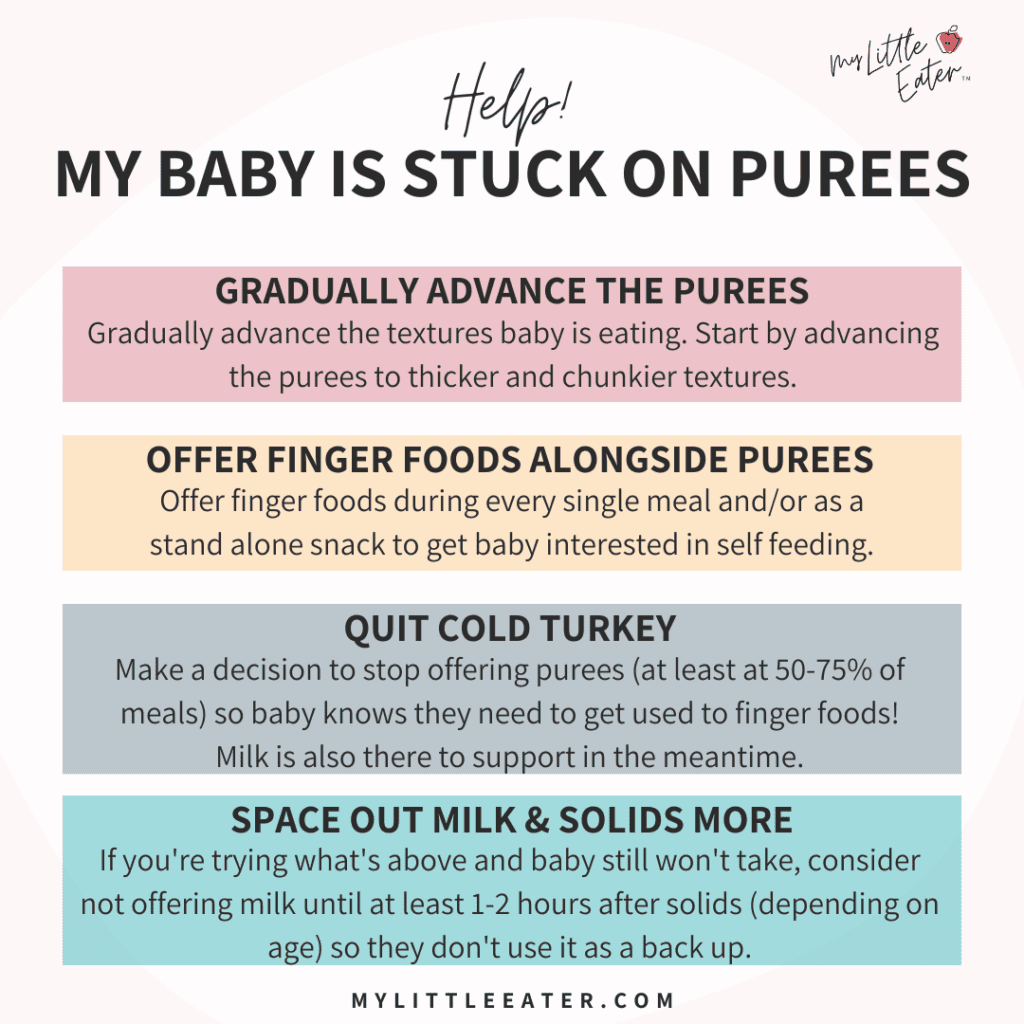
Gradually advance the purees
What you want to do is gradually advance the textures that your baby is eating. Once you know that your baby can swallow purees safely, we recommend transitioning to finger foods right away!
This can mean as little as a day or two on purees, or maybe a few weeks on purees. But we don’t recommend delaying the introduction of finger foods much past six or seven months. That traditional timeline where babies were kept on purees for months at a time is outdated and is the cause for a lot of the problems that we see in feeding babies today.
If you were serving thin and smooth purees, graduate them to thicker and smooth, then thicker with small lumps (you can mash most soft foods with the back of a fork to achieve this consistency), then thicker with larger lumps (mash the food just a little bit less or add minced pieces of food mixed in). Continue on until you’re serving purees that have a thicker and coarser texture.
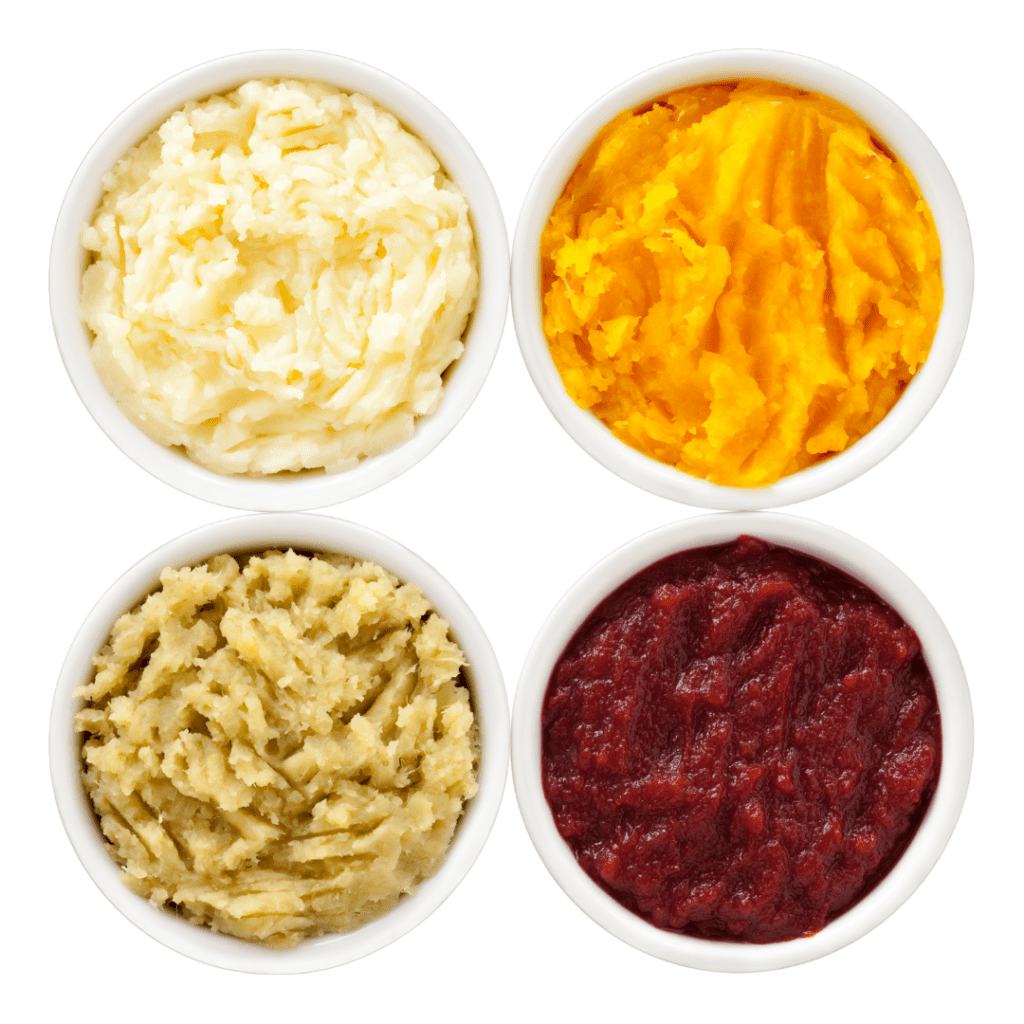
Watch for gagging, see how they react and recover, build your confidence and theirs, and keep moving forward!
If you’re looking for some step-by-step guidance in how to accomplish this, sign up for our free workshop “Baby led weaning (but make it purees!)”. We’ll teach you all about our signature Texture Timeline™ which is used to gradually advance baby from easier to more advanced textures at a pace that works for both of you! You’ll also get a copy of our Texture Timeline™ Starter Guide just for showing up. This includes foods in each texture phase so you know where to start and where you’re going!
Offer finger foods alongside purees
We also recommend serving finger foods alongside purees at mealtimes. Especially if they’re under one year of age and are still getting breast milk or formula to supply them with the calories they need.
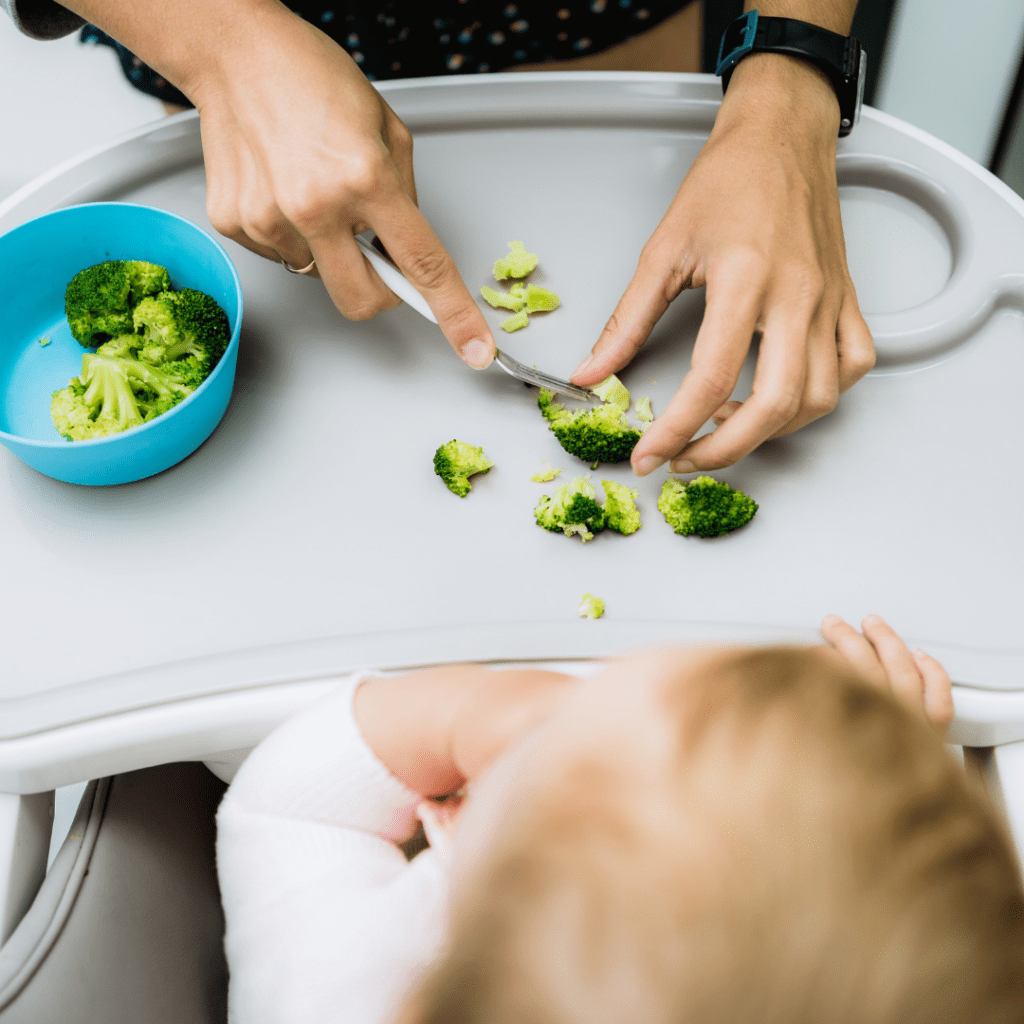
Start with rice rusks, or finger-shaped puffs (like Baby Gourmet carrot sticks or Puffworks), but remember – don’t get stuck there! Use these to get them interested in self-feeding.
Once they start bringing ultra-soft and dissolvable foods like these to their mouths with precision, and start making an up-and-down chewing motion, you can move them up. Try something like roasted sweet potato, or an avocado. Then continue to progress them from there!
Again, we teach about our signature Texture Timeline™ tool that’s exclusive to My Little Eater in our free workshop “Baby led weaning (but make it purees!)”. This tool will help you to gradually move from purees to solids confidently because it shows you what each texture phase should look like and how to achieve it – no more guesswork!
Quit purees completely
Sometimes the gradual approach of offering finger foods alongside of purees will work, but sometimes going cold turkey with purees is required so that your baby learns that purees won’t be offered anymore.
Some babies are so used to their backup purees that they need to understand that you’ve moved on, and that they’re going to have to start to work a little bit harder to chew the finger foods you offer.
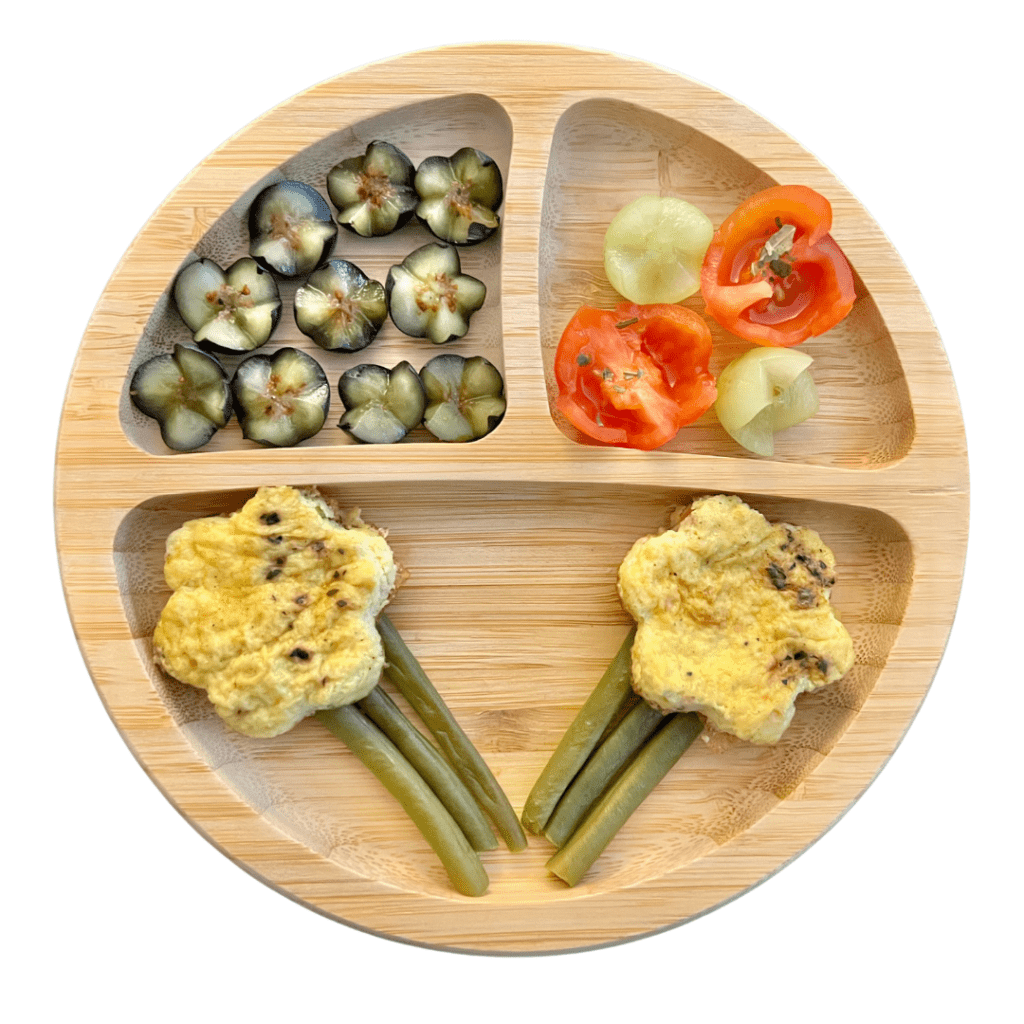
The first couple of days may be rough because your baby could end up refusing foods in general. We know this is worrisome for parents because they’re concerned that their baby won’t get the calories and nutrition they need. The thing to remember is that breastmilk or formula is still there to provide them with the calories that they may be missing from solid foods. So if they skip a meal completely they can make up for those calories at their next milk feeding.
Hopefully, this will help you stress less as they fight the transition over the next few days (maybe even a week). Offer them breastmilk or formula about half an hour to 45 minutes after the meal has ended. This way you know that they won’t end up super hungry, and they’re still getting the nutrition they need to grow, but you’ve also got out of the habit of offering purees as a backup. Leading to you finally getting out of this cycle and moving forward once and for all!
Space out milk and solid food meals
Finally, if you’ve tried all the tips above and still aren’t noticing progress or an interest in self feeding, take a look at their schedule and make some changes.

Typically, we recommend offering solid foods 30 to 90 minutes after a milk feeding. If you’ve been offering them closer to the 30 minute mark, try pushing the timing back in 15 minute intervals to see if that makes a difference. You may even have to reach up to 2 hours apart in order for your baby to be hungry enough to try eating.
A baby who isn’t actually hungry, isn’t going to show any interest in solid foods – especially those that take more effort for them to eat, like advanced textures and finger foods. Your baby needs enough time between a milk and solid food meal to develop a true hunger and come to the table ready to try new textures.
Read more about how to create a feeding schedule for your baby taking into account their naps. You can also see how we troubleshoot a common scheduling issue by following along with our realistic example for the first week of starting solids.
Gagging: What's normal and what's not
You can definitely expect your baby to gag more once they’re offered more advanced textures. Gagging is totally normal, is expected, and is a natural response to something new or different being in their mouth. Their gag reflex is a protective mechanism that is there as a helping hand as they learn their new skills!
It doesn’t mean your baby is choking or in danger.
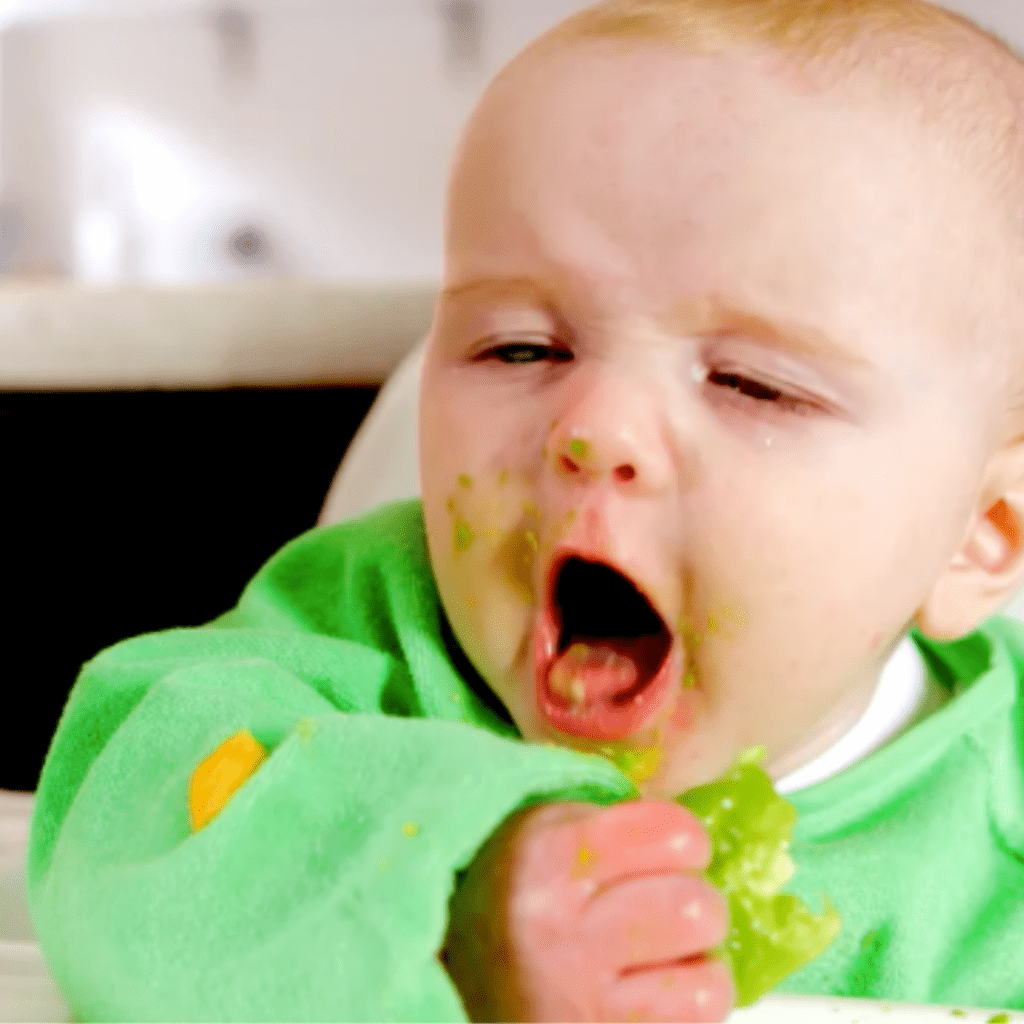
It just means that they’re going to take some time to figure out what to do with that food, with those lumps, and with those new textures that they’re experiencing.
As they start to get more practice with finger foods, they’ll start to figure out how to manipulate those new foods in their mouth, how to chew them, and how to bring them to the back of their tongue for swallowing. That’s when you’ll start to see that the gagging finally starts to decrease. It’s just one of those things that you can’t avoid and that you need to let happen in order to move forward!
When it does start to happen, just be there for them. Coach them through the gag and tell them: “You can do it! You’re doing a great job!”. Try to keep the atmosphere positive and light-hearted. Don’t let your baby feel like there’s something wrong when they start to gag, or like there’s a need to panic, because then they may start to turn away from those foods all together.

If your baby gags and then continues to go on with the meal, maybe goes for another piece of food, maybe just wants to pause, but is still smiling and generally content, then everything is good. This is considered normal and you can keep challenging them with those textures!
However, in some cases, especially with kids who have feeding difficulties and more severe challenges, they may actually vomit excessively, or gag excessively. This means that it’s happening to the point that mealtimes can’t be continued, and are becoming a dreaded experience for everyone.
In these instances, you should definitely talk to your doctor, and ask for a referral for a feeding evaluation, just to rule out any further feeding, or medical problems. Learn more about what is considered gagging excessively and the red flags to watch for.
So there you have it! A general plan for how to get your baby off of purees, progressing onto finger foods, and eating the same meals as the entire family.
If you’re looking for an easy way to transition your baby on to finger foods so they can progress in textures and eat solids that the rest of the family is eating, register for our free workshop to learn about our Texture Timeline™. In “Baby led weaning (but make it purees!)” we teach you how to use our timeline tool to gradually advance in textures at a pace that feels right for both you and baby. Plus, we’ll talk all about gagging and choking, and give you our Starter Guide so you can leave the workshop ready to tackle the next texture!
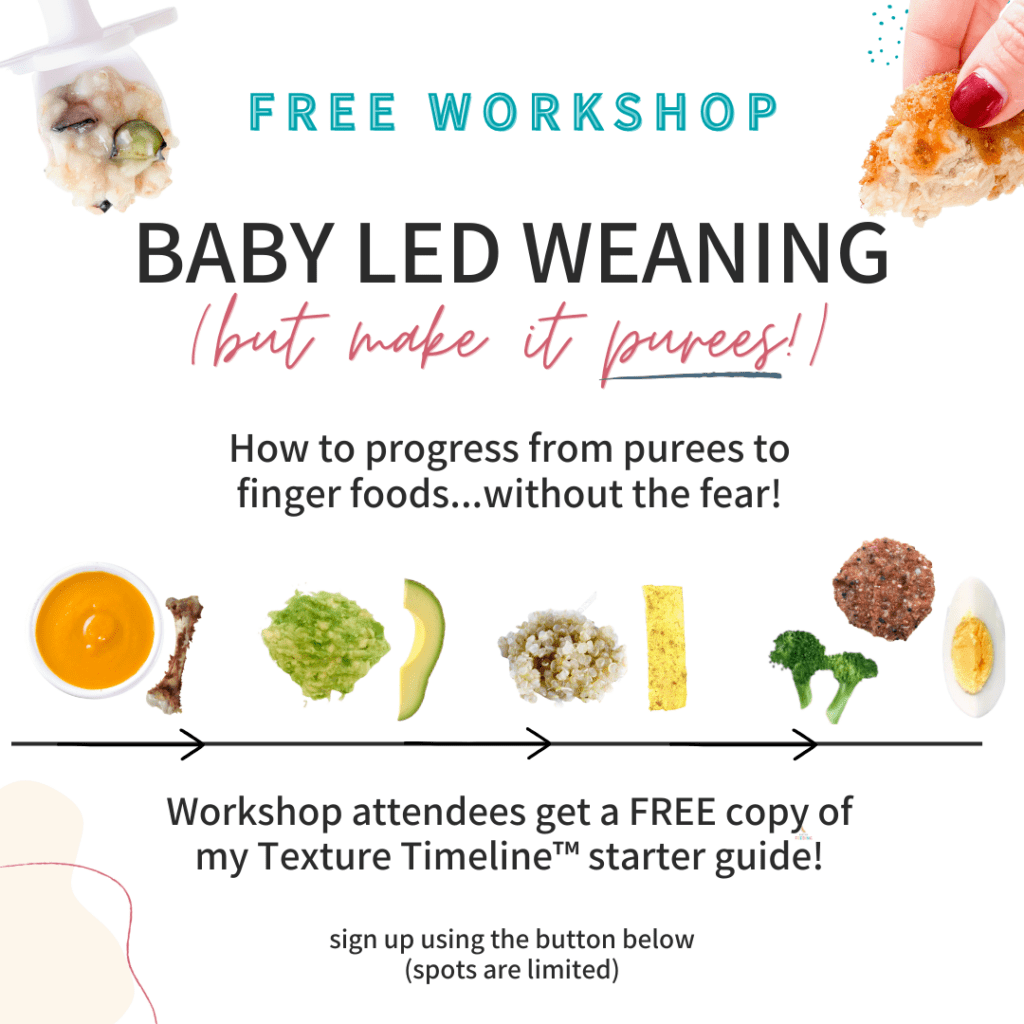
Was this helpful? Pin it to save for later!
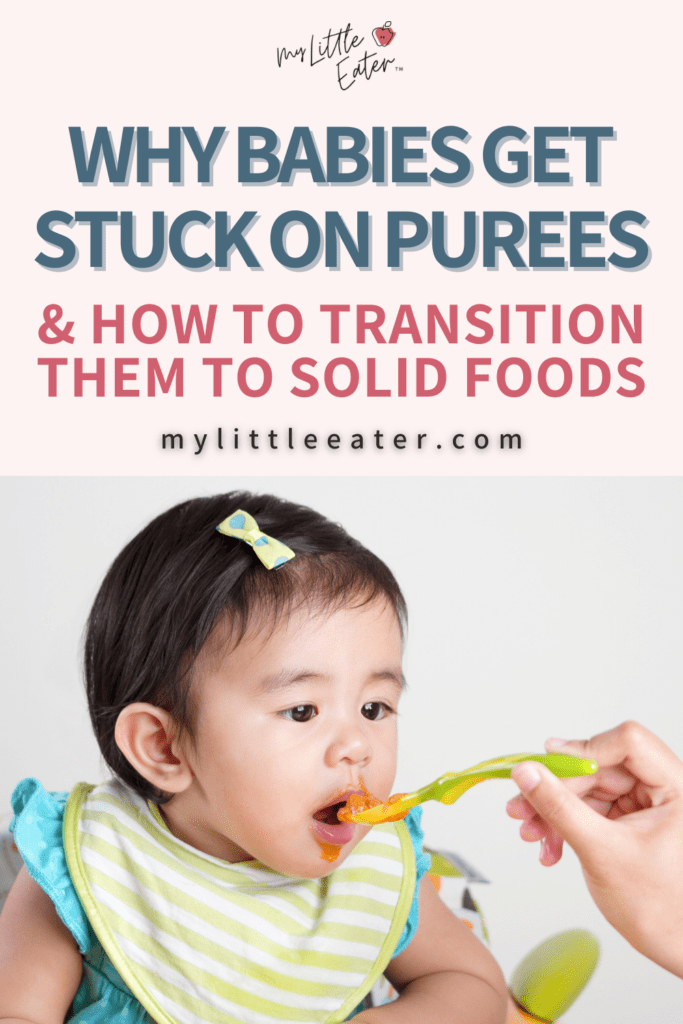
References:
- Northstone K, Emmett P, Nethersole F; ALSPAC Study Team. Avon Longitudinal Study of Pregnancy and Childhood. The effect of age of introduction to lumpy solids on foods eaten and reported feeding difficulties at 6 and 15 months. J Hum Nutr Diet. 2001 Feb;14(1):43-54. doi: 10.1046/j.1365-277x.2001.00264.x. PMID: 11301932.

Edwena Kennedy, RD
Founder and lead Registered Pediatric Dietitian at My Little Eater Inc., creator of The Texture Timeline™, and mom of two picky-turned-adventurous eaters.

Edwena Kennedy, RD
Founder and lead Registered Pediatric Dietitian at My Little Eater Inc., creator of The Texture Timeline™, and mom of two picky-turned-adventurous eaters.

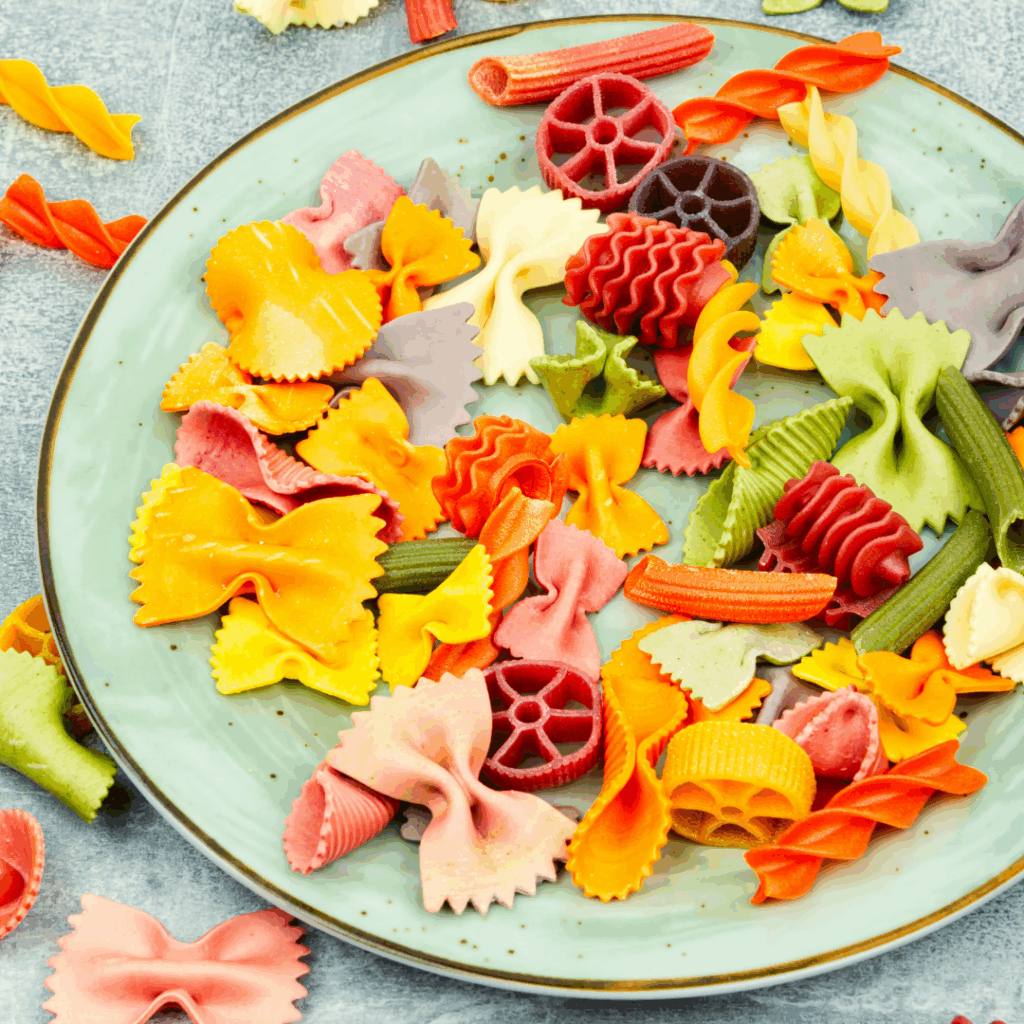
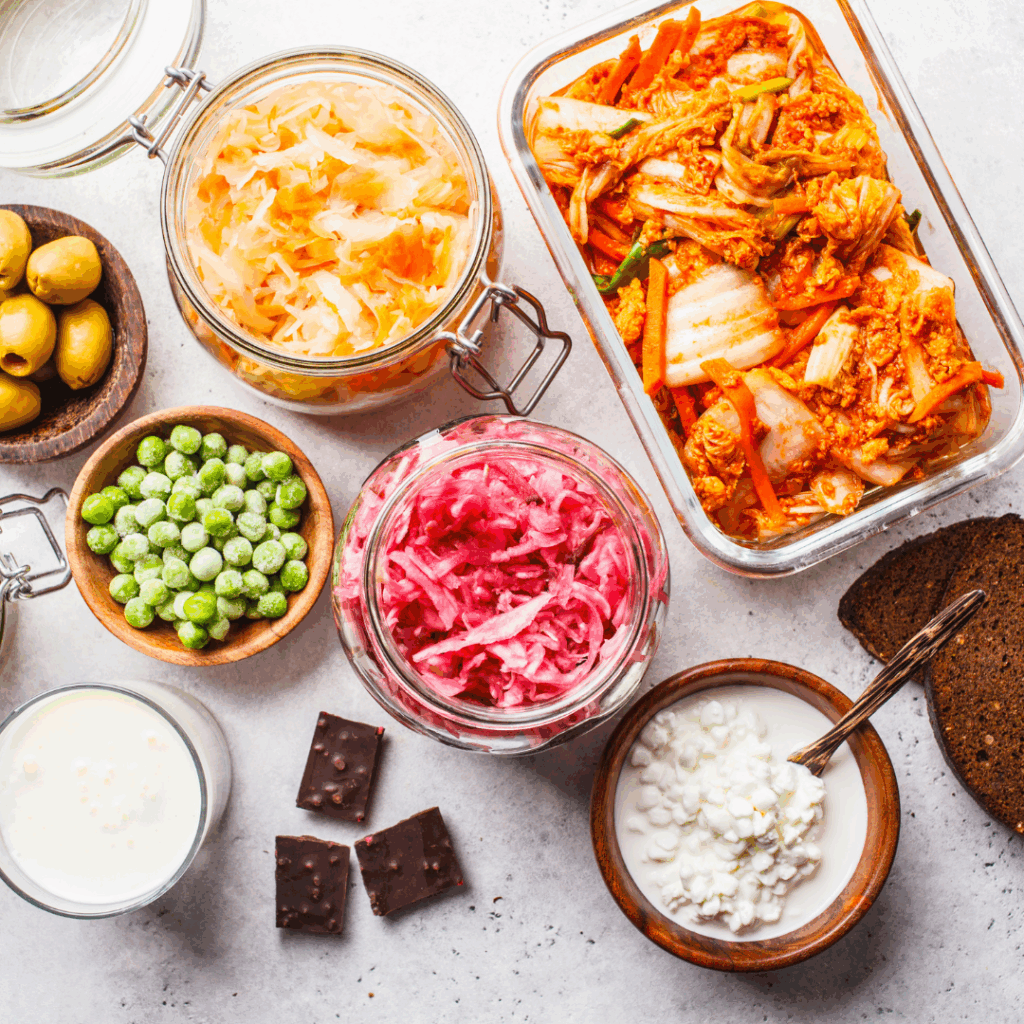






15 Comments
Loved this post! I was getting so frustrated with my baby getting stuck on purees, and now I understand why. The tips on how to transition to solids are really helpful too – can’t wait to try out the parent-led feeding method with my little one!
Hi Poppy! We are so happy that you enjoyed the post and found the tips helpful on transitioning to solids!
Thank you for this insightful post! I found the reasons you outlined for why babies get stuck on purees really relatable. The tips for transitioning to solids are super helpful, especially the part about making mealtime fun and engaging. I can’t wait to try some of these strategies with my little one!
Amazing! We’re so glad you found the blog helpful!
This post was super helpful! I had no idea that too much reliance on purees could lead to issues with transitioning to solids. The tips you provided for making the switch feel less overwhelming are fantastic. Can’t wait to try some of the suggestions with my little one! Thank you!
We’re so glad you found this post helpful!
Thank you for this insightful post! I found the reasons behind why babies might get stuck on purees really eye-opening. The transition tips are so helpful – I can’t wait to try introducing more textures to my little one’s meals. This journey can be overwhelming, but your guidance makes it feel more manageable!
We’re so happy to hear you found the post helpful!!
Thank you for this wonderful post! Understanding why babies might stay on purees longer than expected was so eye-opening. Your tips for moving forward feel so doable — I’m excited to start offering more textures to my little one. This feeding journey can definitely feel overwhelming, but you’ve made it feel a lot more approachable!
We’re SO glad to hear that you found this blog helpful!!
Thank you for this insightful post! I never realized how common it is for babies to get stuck on purees. The tips on transitioning to solids are super helpful—I’ll definitely try introducing finger foods gradually. Looking forward to seeing my little one explore new textures!
Yay! We’re so glad to hear you found this blog helpful!
Great tips! I found the reasons for babies getting stuck on purees really eye-opening. The transition to solids can be daunting, but your advice on introducing textures has given me a lot of confidence. Can’t wait to try some of your suggestions with my little one!
This post was so helpful! I’ve been struggling with transitioning my little one from purees to solids, and the tips you provided are exactly what I needed. I especially appreciated the advice on introducing texture gradually. Can’t wait to try out the strategies you shared!
Animesuge is a popular free streaming site for anime enthusiasts. It hosts an extensive and ever-growing library of series and movies, from new seasonal hits to beloved classics. Viewers can enjoy content in high-definition with both subtitled and English-dubbed versions available.
The site is known for its simple interface, fast loading times, and relatively low ad intrusion. It’s a go-to destination for convenient, no-cost anime streaming.https://animesuge.pm/